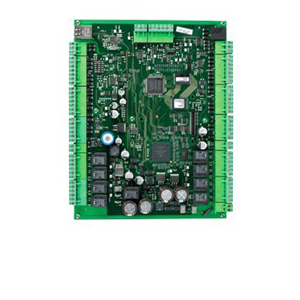Introduction:
Meters in industrial automation are crucial devices designed to accurately measure and monitor a wide range of parameters, such as pressure, temperature, flow, voltage, and current. They provide real-time data that ensures precise control of processes, enabling operators to maintain safety, optimize performance, and prevent malfunctions. In industrial settings, where efficiency and reliability are paramount, meters serve as essential tools for maintaining consistent operations. With their ability to detect and display vital measurements, meters not only enhance process stability but also support automated adjustments, making them integral to modern industrial systems.

What are Meters in Industrial Automation?
Meters in industrial automation are measurement devices used to monitor, display, and control various parameters essential for efficient and safe operation in industrial systems. They measure key variables such as pressure, temperature, flow, voltage, and current, providing accurate, real-time data that allows operators and automated systems to maintain process stability and efficiency. By ensuring that systems operate within defined limits, meters help prevent equipment failures, optimize performance, and enhance safety. Meters can range from simple analog gauges to advanced digital meters, which often integrate with control systems for automated adjustments and improved precision.
Types of Meters Used in Industrial Automation:
- Pressure Meters
Pressure meters, also known as pressure gauges or transducers, are used to measure the pressure of liquids or gases within industrial systems. They are critical for monitoring fluid flow, hydraulic systems, and pneumatic processes, ensuring that pressure levels remain within safe operating limits. These meters help prevent potential damage caused by over-pressurization or leaks, maintaining system efficiency and safety.
2. Flow Meters
Flow meters are designed to measure the flow rate of liquids, gases, or steam within pipelines and processing systems. They are essential for accurate flow control in industries like oil and gas, water treatment, and chemical processing. Flow meters ensure that fluids move at the desired rates, optimizing production processes, reducing waste, and ensuring the consistent quality of outputs.
3. Temperature Meters
High-quality temperature meters, or thermometers, are essential tools for gauging the temperature of processes, equipment, or materials in industrial settings. These advanced meters offer precise and reliable measurements, helping to maintain optimal operating conditions, prevent overheating or freezing, and ensure consistent product quality. High-quality temperature meters are indispensable in applications such as HVAC systems, chemical reactions, and thermal management, where accurate monitoring is crucial for supporting process efficiency and safety. With their superior accuracy and durability, they ensure seamless performance in even the most demanding industrial environments.
4. Voltage Meters
Voltage meters measure electrical voltage in circuits, ensuring the proper operation of electrical equipment and systems. They help monitor electrical performance, prevent voltage fluctuations, and protect equipment from potential damage caused by overvoltage or undervoltage conditions. Voltage meters are commonly used in automation control panels, power distribution, and electrical maintenance.
5. Current Meters
Current meters, or ammeters, are used to measure the flow of electrical current within a circuit. They ensure that current levels are maintained within specified limits, preventing overloads and supporting proper load distribution. Current meters are vital in monitoring motor performance, electrical installations, and energy consumption, contributing to system reliability and safety.
Key Factors to Consider When Choosing Meters for Industrial Automation:
1. Accuracy and Precision
Accuracy is critical in industrial automation, where even small measurement errors can affect process quality and safety. When choosing a meter, ensure it meets the required accuracy standards and provides precise readings for the specific parameter being measured, whether it’s pressure, temperature, flow, voltage, or current.
2. Measurement Range and Sensitivity
Meters must be selected based on their ability to handle the expected range of measurements. A meter should not only measure within the required range but also be sensitive enough to detect minor fluctuations that could impact performance or safety. Choose meters that cover the full range of process conditions to ensure effective monitoring and control.
3. Durability and Resistance
In industrial environments, meters are often exposed to harsh conditions like temperature extremes, vibrations, moisture, chemicals, and dust. Select high-quality meters that are built to withstand these conditions. Look for features like corrosion resistance, rugged enclosures, and protection ratings (e.g., IP ratings) to ensure long-lasting performance.
4. Compatibility and Integration
Meters should be compatible with existing automation systems, including sensors, controllers, and data acquisition systems. Ensure that the meter can integrate seamlessly with communication protocols (e.g., Modbus, HART, Profibus) to support data exchange and automated control. Compatibility minimizes downtime and facilitates easy installation.
5. Response Time
Quick response times are essential for real-time monitoring and control, especially in fast-paced industrial processes. When choosing a meter, consider how quickly it can detect and display changes in the measured parameter, ensuring timely adjustments and minimizing potential risks.
6. Calibration and Maintenance Requirements
Meters need regular calibration to maintain accuracy over time. Choose meters that offer easy calibration procedures and minimal maintenance requirements to ensure they deliver consistent performance. Calibration schedules, ease of access, and support for in-situ calibration should be considered when selecting meters for automation systems.
7. Display and User Interface
A clear and easy-to-read display is vital for efficient monitoring. Digital displays with backlighting, large digits, and intuitive interfaces make it easier for operators to read measurements, especially in low-light or high-stress situations. Some meters also offer remote monitoring capabilities, allowing users to access data through digital dashboards or mobile apps.
8. Cost-effectiveness
While cost is an important factor, it’s crucial to balance the initial investment with the meter’s performance, reliability, and maintenance costs. High-quality meters may have a higher upfront cost but often provide better long-term value due to their accuracy, durability, and reduced need for repairs or replacements.
9. Compliance with Industry Standards
Ensure that the chosen meters comply with relevant industry standards and regulations, such as ISO, ANSI, or CE certifications. Compliance guarantees that the meter meets safety, performance, and quality requirements, ensuring reliable performance in industrial automation systems.

No comments:
Post a Comment